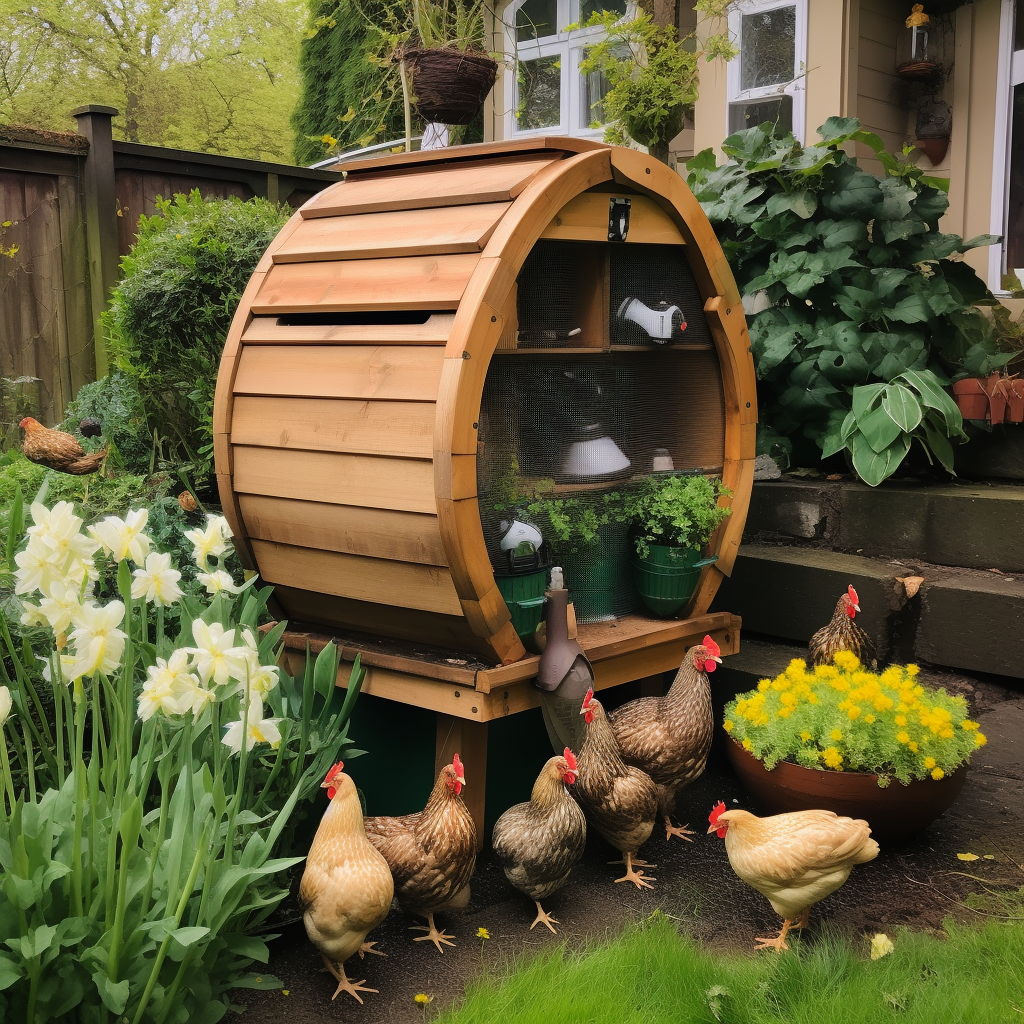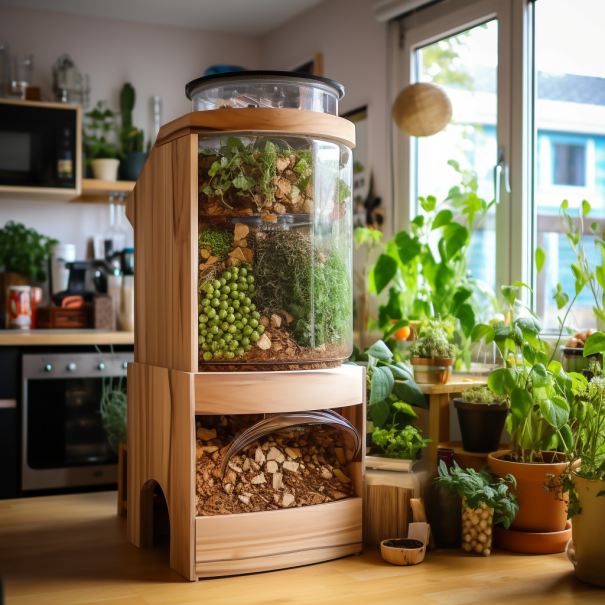Will artificial intelligence help the garden market recover?
Nota Bene: Part of this text was generated by Artificial Intelligence!
It's a fact: while chat GPT was coming up at the end of 2022, 2023 marks the advent of image generation for the world of gardens, and with it a host of concrete applications for our markets. The manufacturers, suppliers and retailers who are preparing the 2025 collections for the JdC Garden Trends 2024 are now working with a major tool: A.I. prototyping. This unprecedented feat has been made possible by our partner, the trends consultancy CHLOROSPHERE, which in its latest trends book presents prototyping pages to turn trends into concrete products: gloves, parasols, pots, barbecues, lawnmowers, screens, paving, plant combinations, greenhouse designs, garden tools and so many products that can be found in a private garden. The power of this tool is limitless!
The order indicated (the "/imagine" in computer language, to which we add as precise a description of the need as possible) takes into account the constraints of the business as well as the trends, colour codes, materials and styles planned for the coming seasons. All that's left to do is take action, saving time, productivity and creativity in a market that needs to catch up. Thank you A.I*!
*See definition of artificial intelligence at the end of this document.

A market that fluctuates between TRUE and FALSE
The return of inflation over the last two years has had a triple impact on many sectors, including leisure, clothing, travel, DIY and, of course, gardening. Firstly, directly: the volume of products consumed by households has fallen almost in proportion to the increase in prices. Secondly, indirectly: rising prices mean that consumers are having to make choices that are not conducive to the consumption of "unnecessary" products. Finally, growing budgetary constraints on living standards are accelerating changes in the sector's business models: second-hand goods, re-use, limited consumption, development of new models, and the proven maturity of the garden centre model.
Put yourself in the consumer's shoes and you'll realise the current paradox, as Manuel RUCAR, a garden trendsetter, reminds us: "Where do products come from? Is it still possible to buy a quality product in a garden centre? If so, how do you measure quality? Since price is no longer a real yardstick, how do I know that what I'm buying is the RIGHT product? Can I trust these online retailers who are really hiding behind dropshipping? How can I avoid opting for the cheapest possible solution when everything else seems to be a huge organised scam anyway? How can I still go to the garden section to plant tomorrow when all it seems to be made up of is plastic and short-lived products? How ecologically responsible is this market, which sends tonnes of perishable products a week to the skip: furniture, accessories, tools, wooden structures? Isn't this one of the last industries that is most at odds with its own nature?
Let's continue this false benevolence and we will lose the real society that has become aware of its future. It's time to get away from our image of artificial nature."
What does the future hold for the garden business model?
Suffering from a reduction in the flow of visitors, rising prices and a fall in the quality of manufactured products, the market has to contend with operating costs that have become too burdensome. Households that invested heavily in new equipment in 2020/2021/2022 are finding that their mid-range furniture, tools and barbecues are now damaged, rusty and ready to be thrown away.
The garden sector is one of the biggest sellers of mass-market products, and is now clogging up landfill sites. Consumers may now be disappointed...
The traditional consumer has aged and his or her "pleasure" purse has shrunk. On the one hand, the "cheapest possible" approach is gaining ground, especially with the current target group for garden centres: the 50-70 age group. Brands such as Shien, Temu, Primark and Action are proof of this...
On the other hand, more reliable products are also making inroads with a younger target of 35-45 year-olds, who hardly ever set foot in the stores frequented by their parents. It is above all a clash of generations, of culture and of appropriation that is taking place. People who were born at the same time as the garden centre model (the Millenials generation) don't fit in: a lack of authenticity, a mid-range positioning at the heart of the range, collections that are often too short and too deep, particularly for pottery and furniture... these are all fractures between consumerism and specialised distribution that seem difficult to repair today. And yet the brands that have understood this change are performing well. This is the case with Veja and Patagonia, which recently made it into the top 5 of favourite brands for Millennials and proudly proclaims "don't buy our products"... just like the new dating app Hinge, which is marketed as "the app designed to be deleted"... a no-brainer!
As far as the garden industry is concerned, all these paradigm shifts are also a necessity expected by consumers, and the response could be an uberisation of our industry, which would atomise and return to being as close to the people as possible.


What is A.I. ?
Artificial intelligence (AI) is a technology that enables machines to perform tasks that normally require human intelligence. Artificial intelligence works primarily through machine learning, neural networks and data analysis.
Machine learning algorithms enable machines to detect patterns and make rapid decisions based on information available throughout the web.
Artificial neural networks are another fundamental element of AI. Inspired by the way the human brain works, neural networks are made up of layers of interconnected nodes that process and transmit information. Thanks to deep learning, neural networks can perform complex tasks such as image recognition, contextualisation or even recognising the geography/topography of a place in our case.
Data analysis is also crucial to the functioning of AI. AI models process large amounts of data to extract useful information. Training data and input data are analysed to determine patterns, characteristics and correlations that feed into the decisions made by the AI.
Artificial intelligence has applications in many fields, such as medicine, transport, traffic, finance, industry, artistic creation and so on. Can it help solve complex problems and provide innovative solutions, including for a mature market that is struggling to return to growth?
Can Artificial Intelligence help us boost our market?
In 2022, A.I.-powered, human-trained chatbot systems were emerging. Plants'Doctor were springing up all over the web, including on the HeyHorti e-brand in Asia. Today, thanks to deep learning and generative modelling techniques, AI is capable of understanding and interpreting massive sets of visual data to produce images of striking quality.
Once the AI is trained, it can be used to generate realistic images of a specific concept.
For example, a manufacturer wanting to design a new product can feed the AI with information about the desired characteristics, such as size, shape, materials, and in the case of innovation: CHLOROSPHERE's market trends for the coming seasons. AI can then generate a realistic image representing this strategic concept, enabling manufacturers to explore ideas visually and make informed decisions.
In the new trend book, some forty projects have already been presented to manufacturers and retailers for 2025. This gives manufacturers the opportunity to innovate more effectively and efficiently. They can quickly generate images to evaluate different designs, explore creative options and rapidly iterate on ideas that are already in line with market expectations. In addition, AI can provide suggestions based on its prior learning, which can inspire new ideas and stimulate innovation.
Visuels : exemple de génération de prototypes par l'Intelligence Artificielle sur le marché – très attendu dès 2024 – des composteurs domestiques.


Integrating A.I. into the trend analysis algorithm, a first-of-its-kind conference at the JdC Garden Trends 2024!
By analysing the web's big data, demographic data, purchasing habits and market trends, AI can provide valuable information that can be used tenfold to develop products tailored to customer expectations. This would make it possible to boost sales through even finer targeting, and to recover more quickly from economic losses during a crisis by focusing on promising strategies. Its strategic integration into an already efficient trend analysis model could play a key role in the economic revitalisation of players in the garden market.
CHLOROSPHERE's trend analysis algorithm, which analyses between 200 and 500 inputs per day and compiles more than 2 years' worth of data in real time, is thus gaining in speed of action and agility in the face of an increasingly fluid market. Users of the trend book can rest assured that their strategies will be as relevant as never before...
The #Barbiecore 2023 wave was already anticipated by CHLOROSPHERE long before it arrived...

